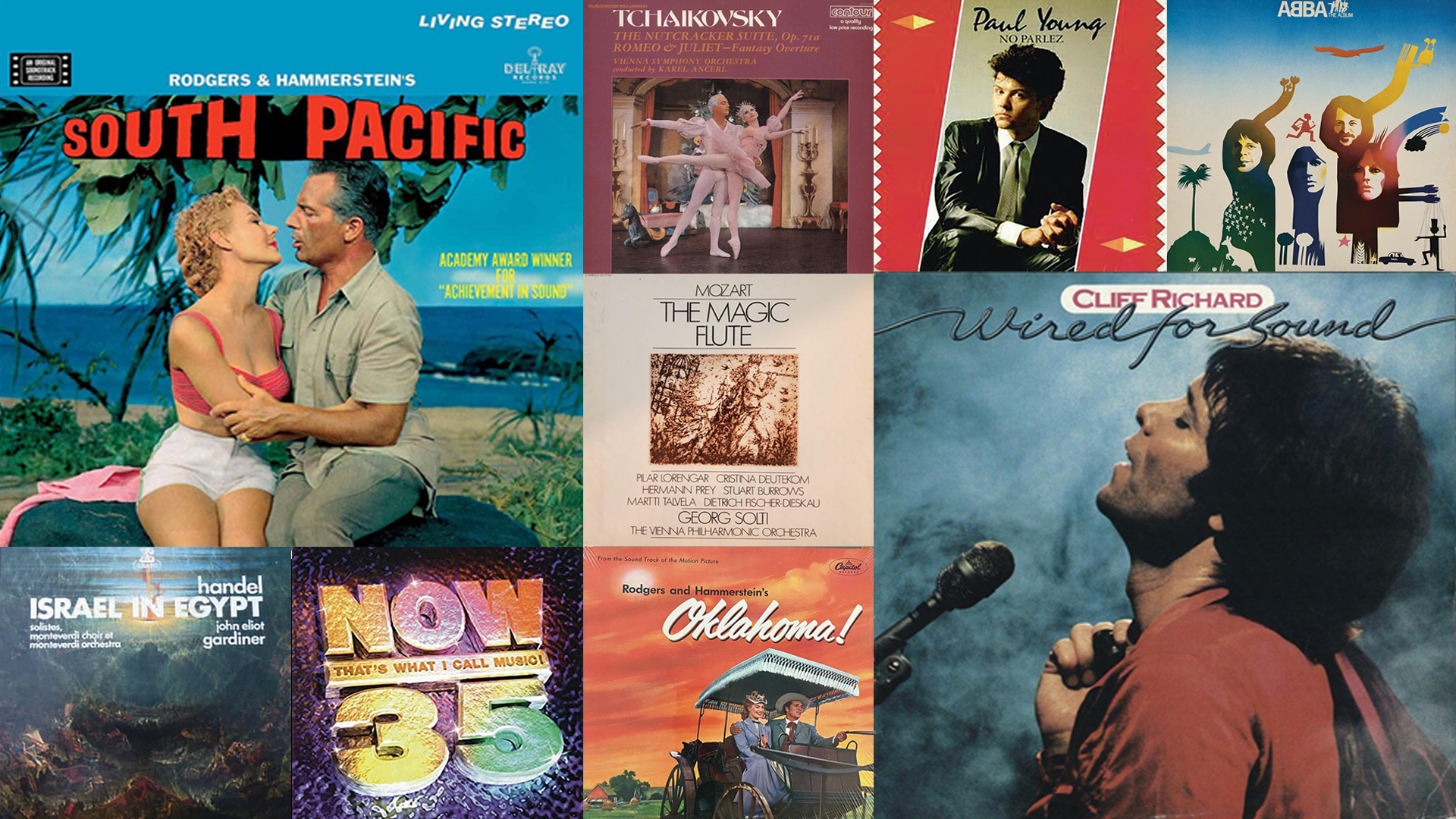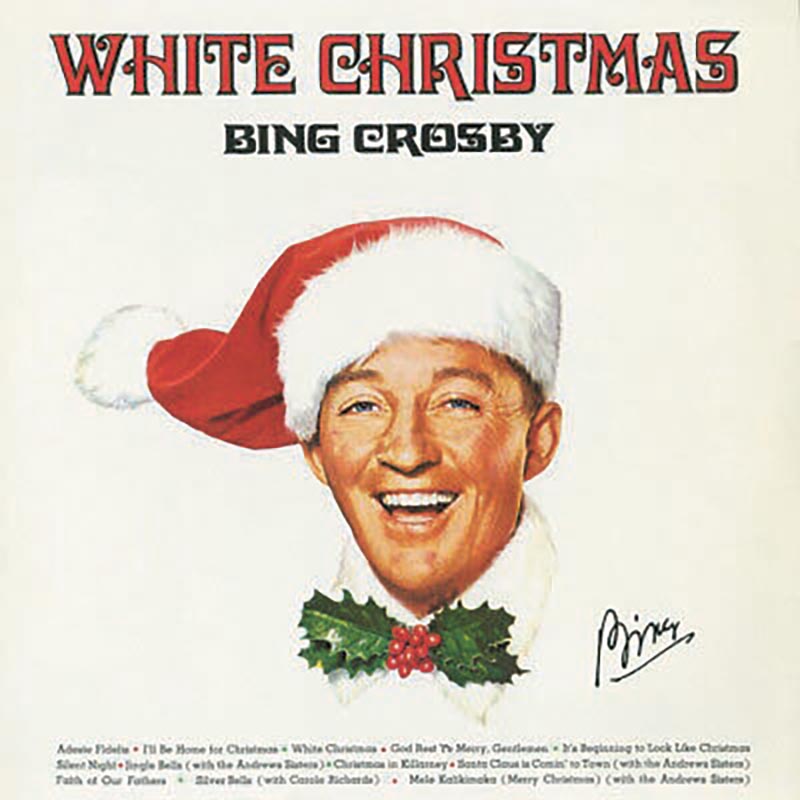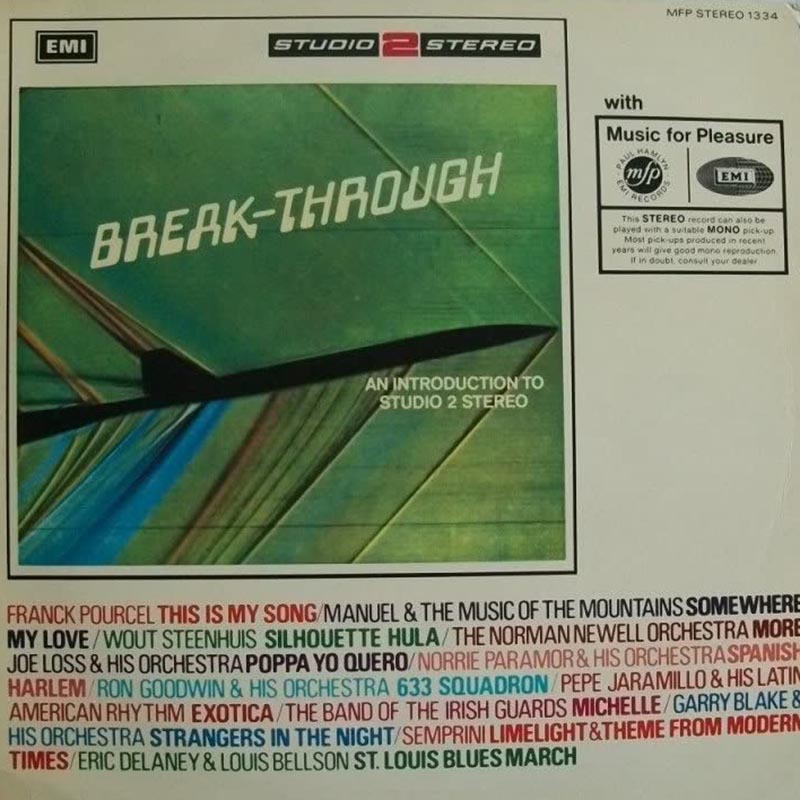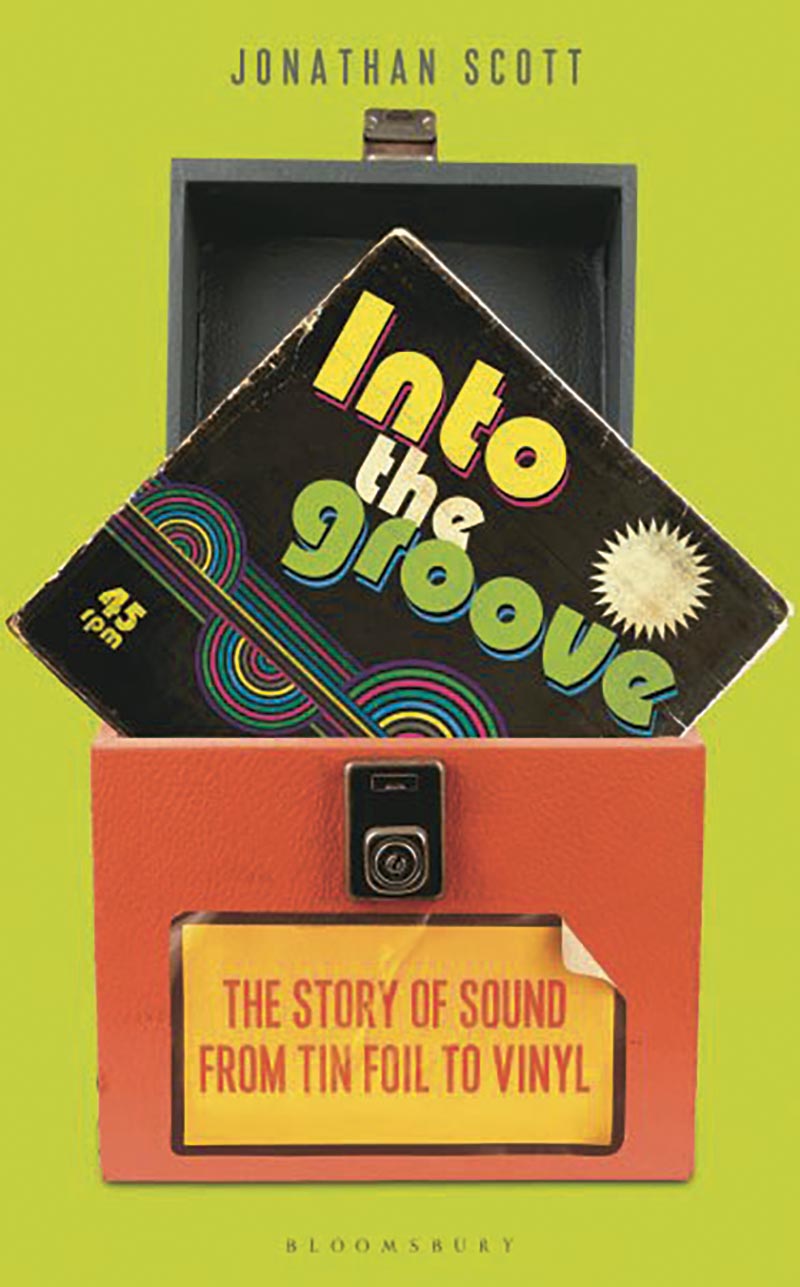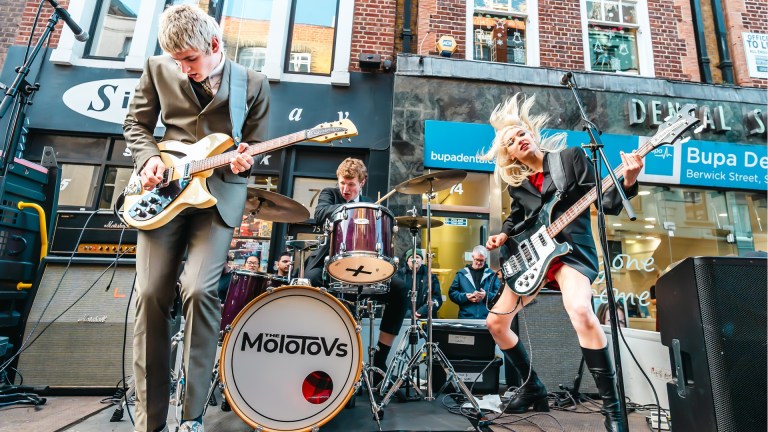Of all the early recordings that survive, the most magical is a performance of Handel’s oratorio Israel in Egypt, recorded at the now-vanished Crystal Palace. The sound quality is dreadful. It sounds like a microphone has been dropped in a pond. Yet you can hear that somewhere in its murky depths, is something beautiful. It’s like putting your ear to 1888. (Search: Handel, Crystal Palace, 1888)
Tchaikovsky: The Nutcracker Suite
By the 1920s, more record labels began offering special record albums in dark-coloured leatherette or canvas bindings. And collectors would also group together 78s by artist or type – foxtrots in one, waltzes in the other. One of the first proto-albums came from the German record company Odeon, which issued The Nutcracker Suite on four double-sided shellac discs in 1909.
Bing Crosby: White Christmas
The electrical era of sound recording begins in 1925. Compared with acoustic recording horns, microphones were like fine paint brushes, enabling studios to fill shellac grooves with more detail and precision. It also freed up performers like Bing Crosby. Singers no longer had to just belt it out, but could get up close to the microphone and croon.
South Pacific
Advertising helps fund Big Issue’s mission to end poverty
South Pacific made the new-fangled LP a must-have. Hits from Perry Como (Some Enchanting Evening) and Peggy Lee (I’m Gonna Wash that Man Right Outta My Hair) had only whetted the public’s appetite for the cast recording, and Columbia used the extra elbow room granted by the microgroove to tweak and tailor the story for home listening. Then they put it in fancy new clothes, dressing it in Alex Steinweiss’s distinctive artwork.
Break-Through with Music for Pleasure
Stereo had been around for decades, but didn’t become the norm on record until the 1960s. Studio 2 Stereo Records was founded by EMI in 1965, issuing easy listening and light classical music. Not only do they often come in strange and beautiful covers, but as you listen you can remember their grandfather. The first modern stereo record, was a test disc put out by a New York label known for its sonic spectaculars in October 1957. It had Dukes of Dixieland on one side, railroad sound effects on the other.
Mozart: The Magic Flute
Nasa’s interstellar mixtape, better known as the Voyager Golden Record, is speeding away from us aboard Voyagers 1 and 2 at around 30,000mph. These launched in 1977, the 90 minutes of music selected for an alien audience by a team led by Carl Sagan. Although he didn’t much care for Mozart, the Queen of the Night aria made it aboard because in under three minutes it ticked three important categories: Mozart, opera, and, in Edda Moser’s singing, the range of human vocal cords.
Oklahoma!
Advertising helps fund Big Issue’s mission to end poverty
The movie soundtrack Oklahoma! pops up just about everywhere [it’s a charity shop regular]. The Broadway cast recording sits at the inter-section between shellac and vinyl. The production opened in 1943, running for 2,212 performances. Decca dragged cast and orchestra into a recording studio and a streamlined version appeared as an album of six 10-inch 78s. It sold more than a million copies and turned ‘full-cast albums’ into hot property.
Cliff Richard: Wired for Sound
The story of the groove is a quest for runtime. Early cylinders might manage three minutes, LPs could promise around 20 minutes a side. Cassettes could boast 90+ minutes, with no scratches, skips or static, and with the Walkman and car stereo, you could take them with you. The title song of this LP is a paean to home and portable hi-fi, the video sees Cliff mooning about on roller skates, a Walkman
on his hip.
Paul Young: No Parlez
No Parlez stands near the start of compact disc’s assault on vinyl. While the 1983 LP sold by the bucketload (and is still almost compulsory in all UK charity shops) the CD version had an extra track AND longer mixes of several songs. Add to this the clean, crisp sound and seemingly hard-to-scratch surface… no wonder vinyl looked worried.
Now! That’s What I Call Music
Advertising helps fund Big Issue’s mission to end poverty
Scratched and warped Now! complications encapsulate vinyl’s demise and resurgence. The first is packed full of top-notch and sub-standard pop, and most of us have a favourite volume we particularly associate with childhood. Now 35, from 1996, was the last of the original run to be issued on vinyl. And yet today, you can buy the original, repressed, from Tesco.
Into The Groove: The Story of Sound From Tin Foil to Vinyl by Jonathan Scott is out now (Bloomsbury, £17.99). @thejonoscott
This article is taken from The Big Issue magazine, which exists to give homeless, long-term unemployed and marginalised people the opportunity to earn an income.To support our work buy a copy! If you cannot reach your local vendor, you can still click HERE to subscribe to The Big Issue today or give a gift subscription to a friend or family member. You can also purchase one-off issues from The Big Issue Shop or The Big Issue app, available now from the App Store or Google Play.
